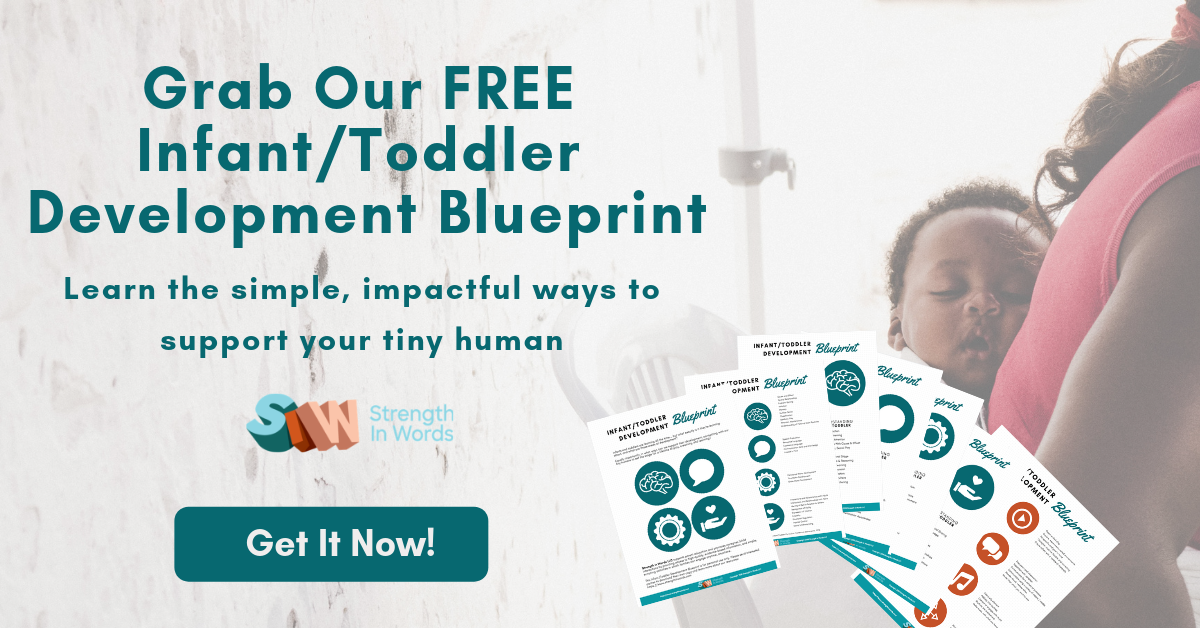We started introducing solids to our youngest a few months ago… and he is really not interested. He doesn’t like being spoon-fed, and he seems to be starting to navigate the world of baby-led weaning.
I think what’s resonating with me is the idea that the act of eating, for an infant, is an activity like anything else…
And if I introduce it more like a play activity, that takes the pressure off of eating, and makes it more about exploring texture and having fun (with the added possibility of tasting what’s offered to him, as well).
Infants and toddlers learn through experience, practice, interaction… and that old adage, “don’t play with your food!” is not necessarily applicable to an infant!
Play is what young children do – how they learn and explore, and like any other object that comes near a baby, food is likely to be played with!
If we look at the introduction of food as a sensory experience, it can help us let go of the need to control our little one’s intake and instead focus on the process of learning and, when necessary, desensitizing a baby who is uneasy with new textures or experiences.
There is another adage that might be more appropriate here, which is “food is for ‘fun’ up through the age of one!”
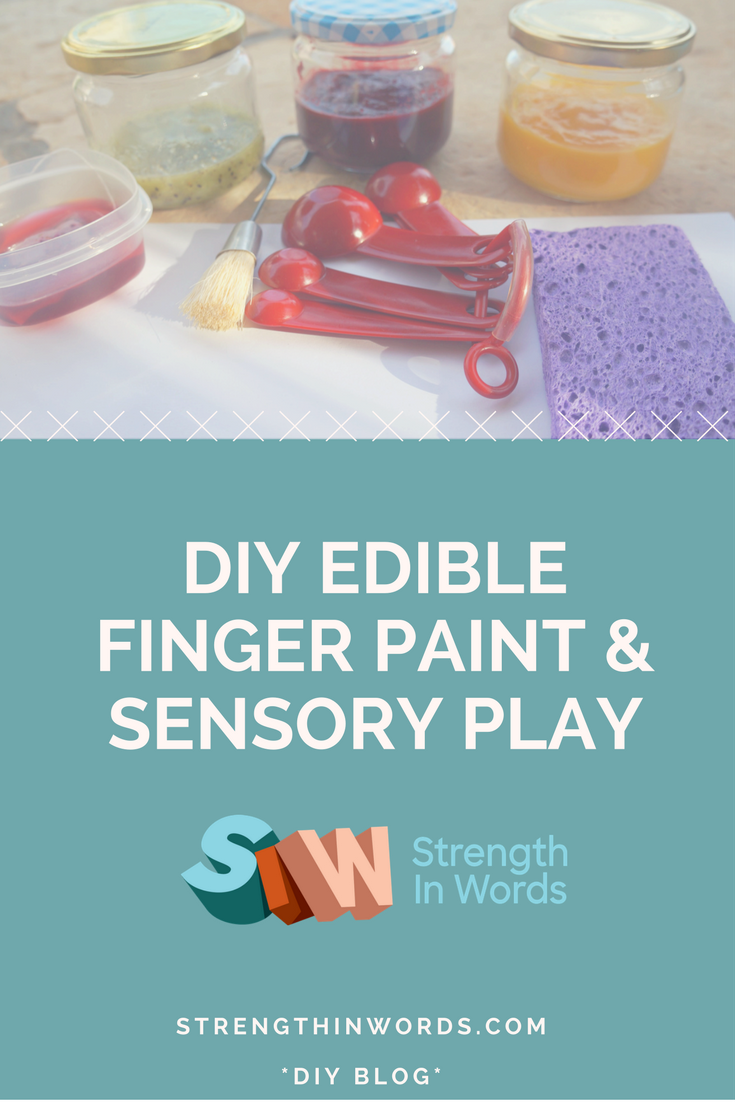
On this week’s corresponding Learn With Less podcast episode, “What’s So Great About Messy Play?,” we discussed a few ways to integrate messy play into a young child’s life, and some of the benefits of it from a developmental perspective.
I modeled a way to create a multi-sensory, interactive finger painting (and eating!) sensory experience out of colorful food items.
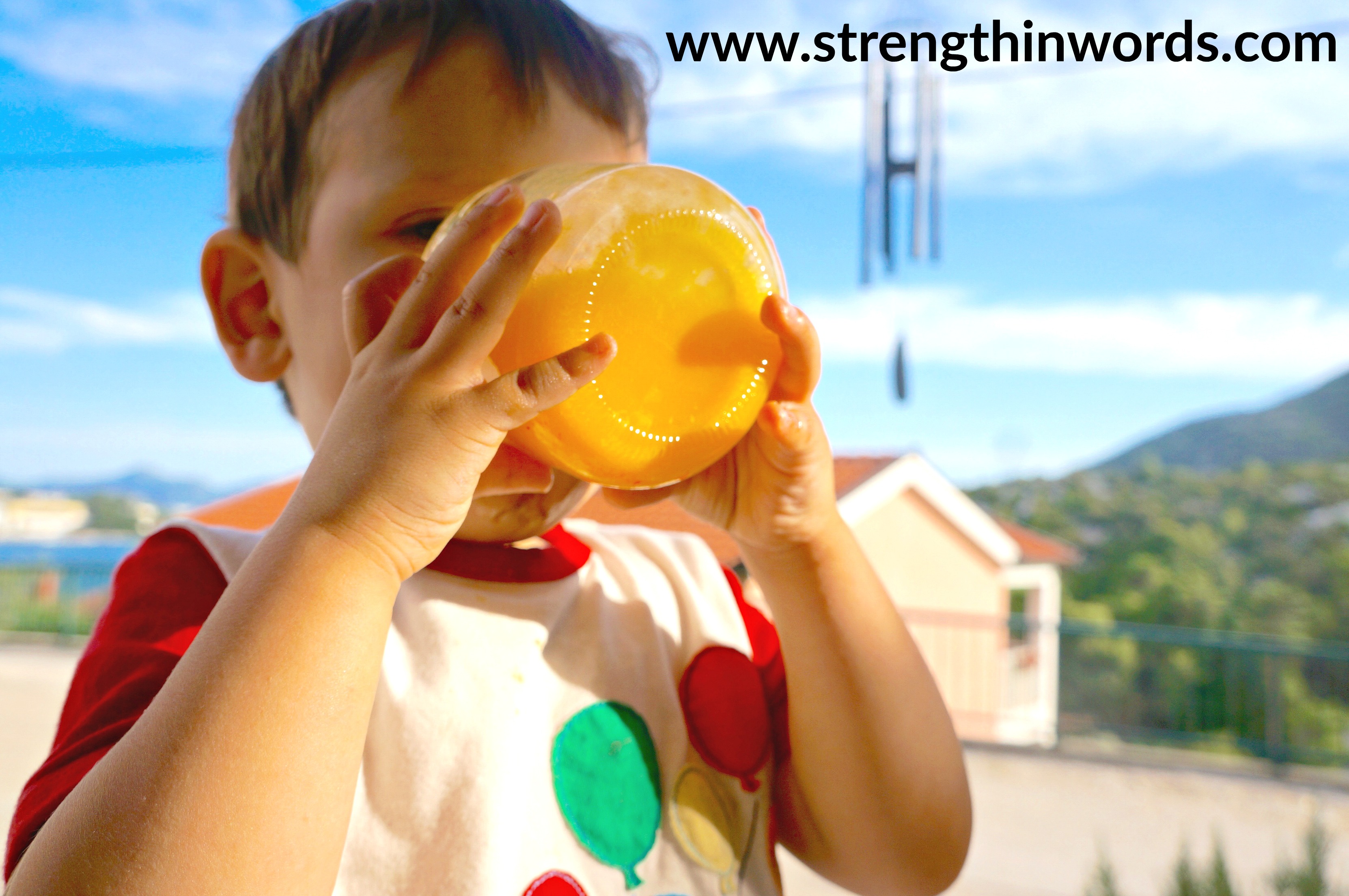
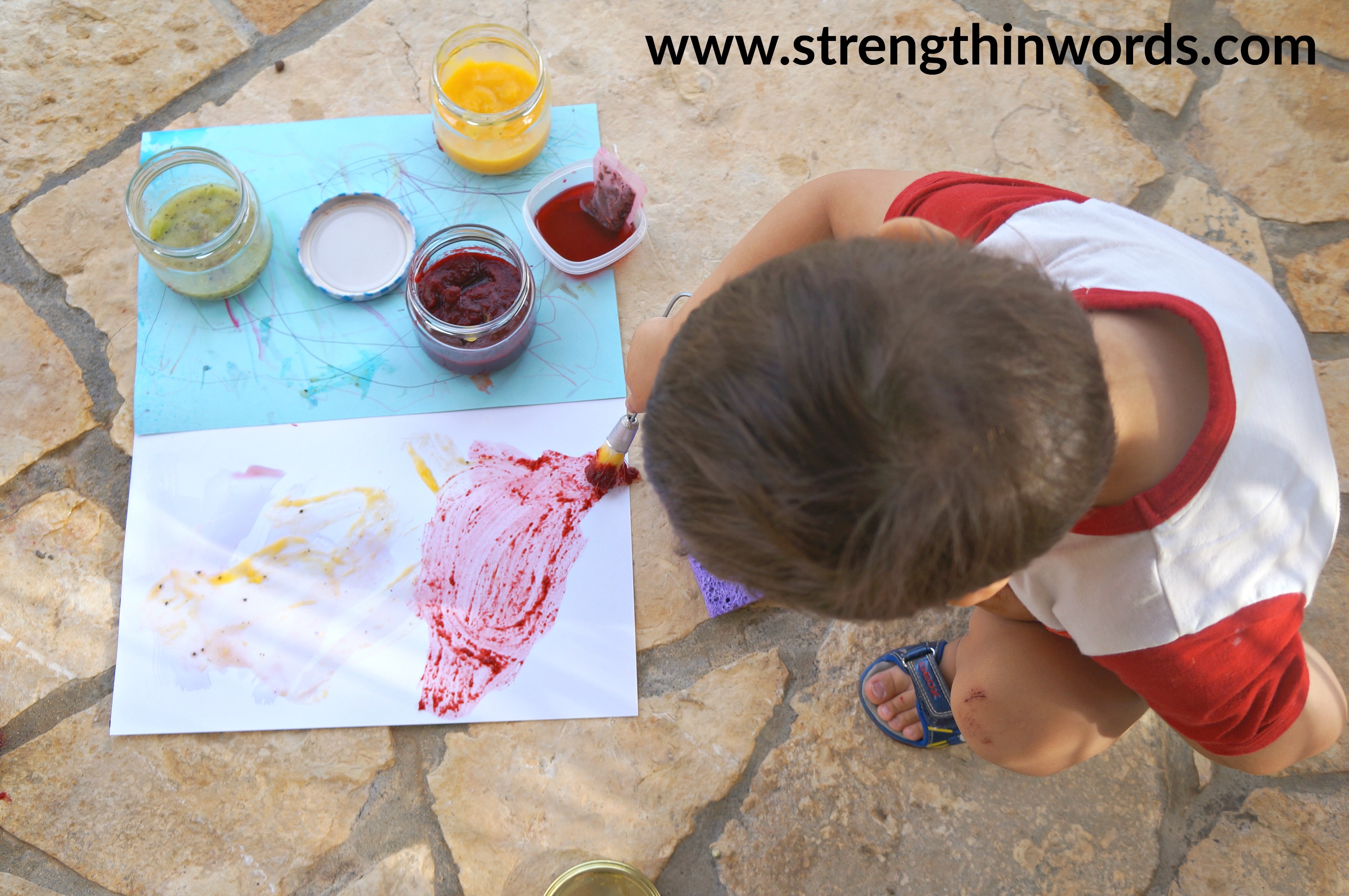
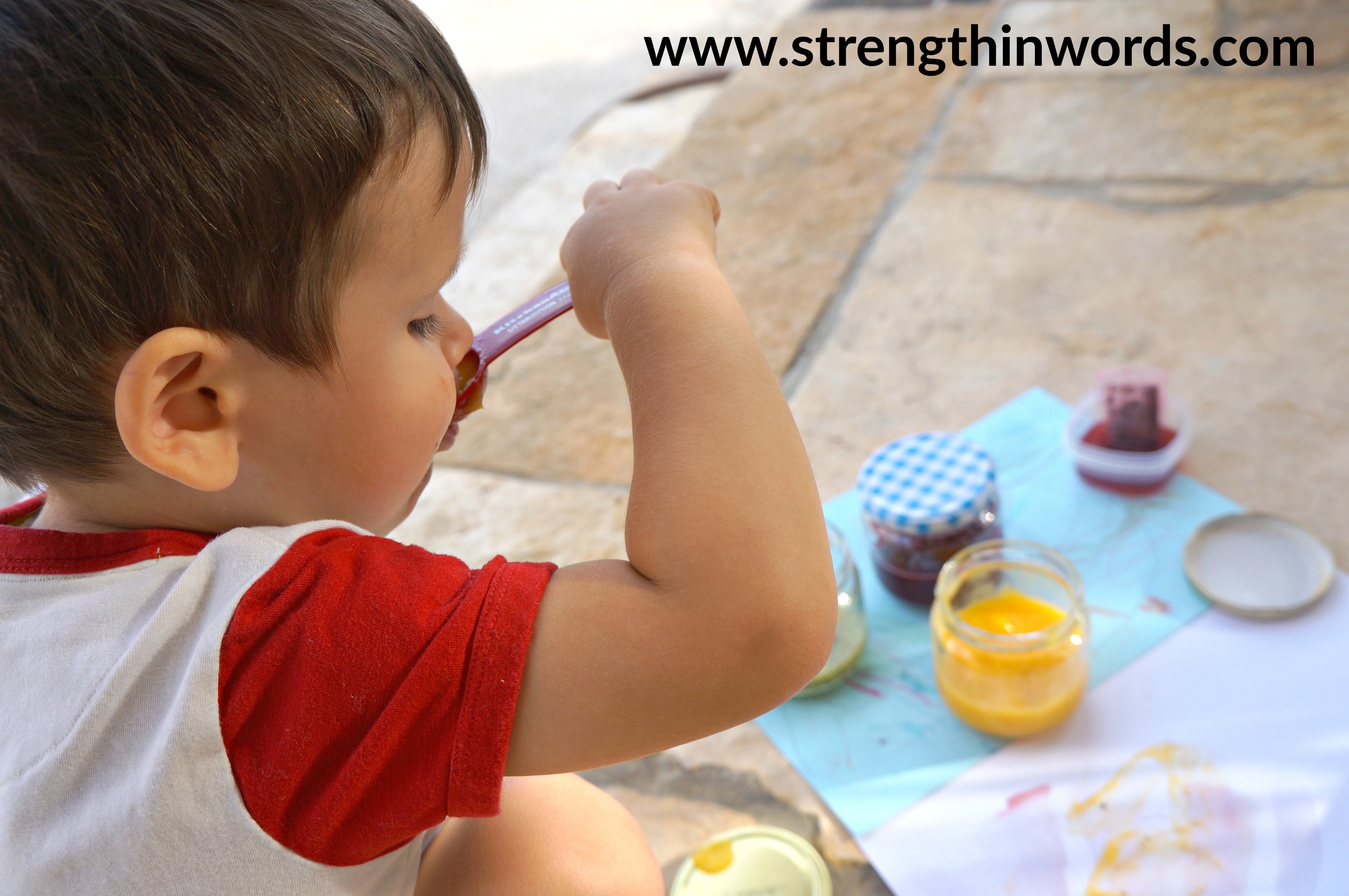
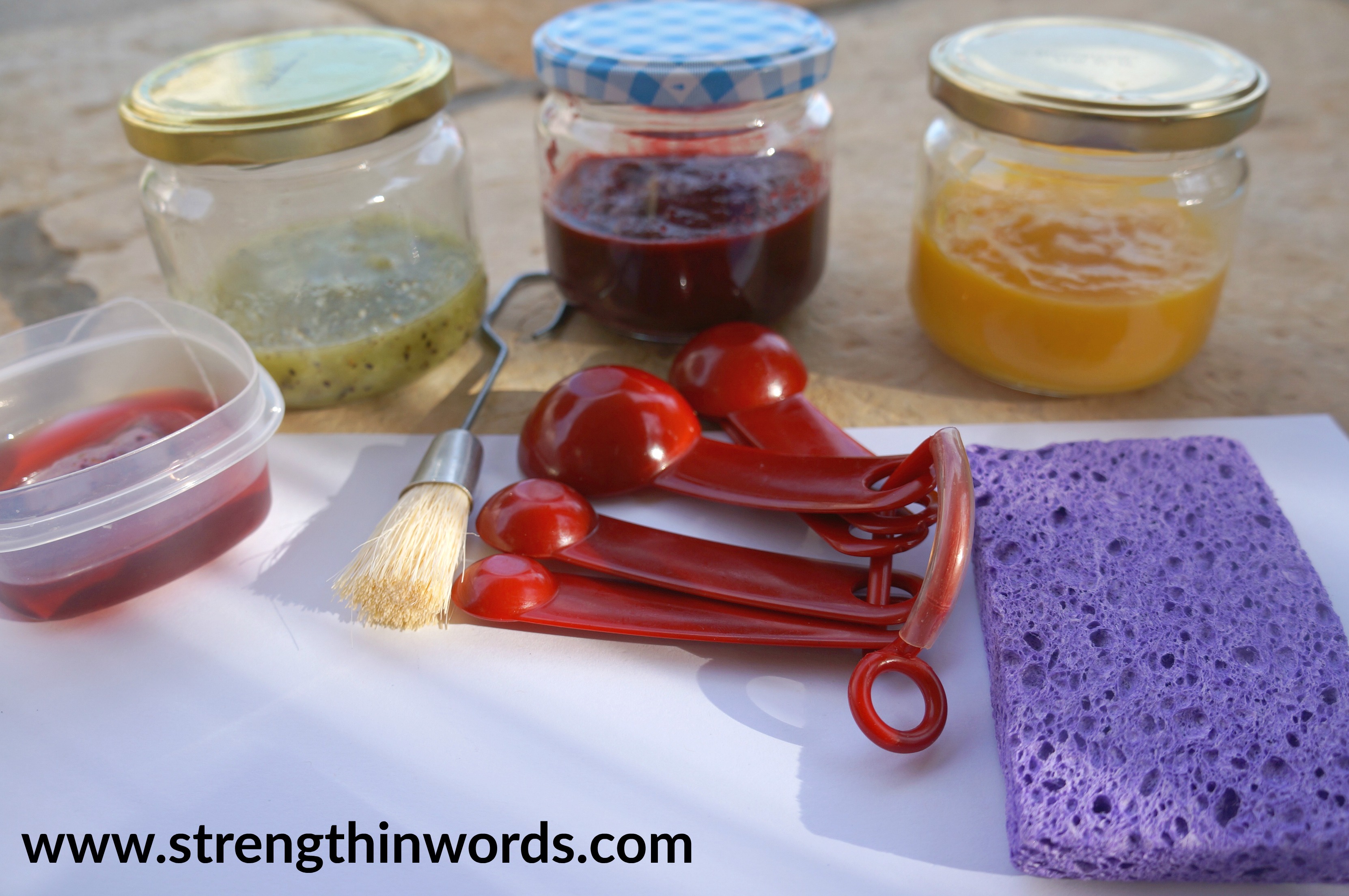
Don't Miss our Corresponding Podcast Episode!
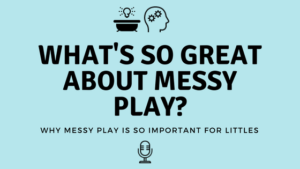
Materials to create your own edible finger paints:
- An assortment of brightly colored food items (we used pureed mango, kiwi and beet, as well as a berry-flavored tea bag to create orange, green, purple and red finger paints)
- Paper (or just a plastic tray!)
- Optional: additional tools, such as a basting brush, a sponge, etc.
Instructions to create your own edible paints:
- Puree your selected foods and place them each in a low, steady container into which small hands or fingers can dip; place a colorful tea bag in a small amount of cool water
- Lay out your paper or other painting surface, ensuring you are comfortable with what’s beneath it (you might lay a tarp or other wipeable surface beneath your painter and paint supplies)
- Talk (or sing, as we did in the corresponding episode!) about what your little one is doing with the paints and/or tools. You might model additional ways your child might use those tools – but try to let your baby explore the way he wants to! You might see the paper getting covered in paint, or your baby’s body, or perhaps it will simply turn into a snack activity! Try to follow your little one’s lead, as in any other play activity!
Ages
- The World Health Organization (WHO) currently recommends that infants be introduced to solid foods from the age of 6 months.
- Toddlers can also enjoy edible finger paints, and this can be a wonderful activity with two young children!
- For any age, this kind of messy play is a wonderful way to integrate opportunities for learning concepts and for exposure to vocabulary
See my Pinterest board for more DIY finger paint ideas!

